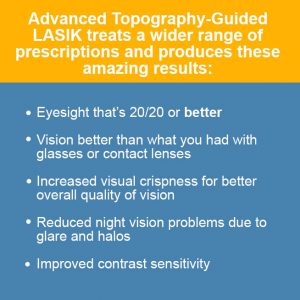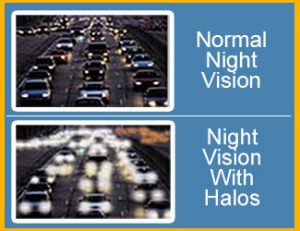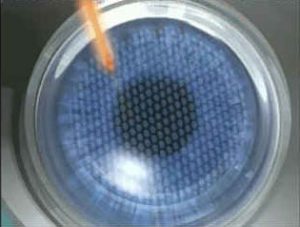LASIK Laser Vision Correction and Advanced Topography-Guided LASIK
LASIK eye surgery is any procedure that uses a laser to reshape the cornea to reduce or eliminate the need for contacts and glasses. LASIK and PRK are the most common procedures, applicable to most people wearing corrective lenses. At Furlong Vision Correction, we use Advanced Topography-Guided LASIK – a highly-customized laser vision correction technique used for all the procedures that can correct your vision more precisely than ever before.
Wavefront Optimized LASIK
Originally invented by NASA for use in high-powered precision telescopes, Wavefront technology is now available for medical use. Using a device called a Wavelight VARIO topolyzer, Dr. Furlong is able to measure the way light travels through your entire optical pathway and compare it to the way light travels through an optically perfect eye. This creates a 3-D map of your cornea that is as unique to you as your fingerprint and 25 times more precise than a prescription obtained using conventional diagnostic equipment. The information from this customized “fingerprint” is transferred electronically to the laser to create a unique surgical plan for each patient.Learn more.
Contoura ® Vision Topography-Guided LASIK – Improving the Quality of Your Vision

Several types of visual imperfections, referred to as lower- and higher-order aberrations, can exist within the eye and affect both visual acuity and the quality of vision. Previously, only lower-order aberrations (such as nearsightedness and astigmatism) could be measured and treated either with glasses or contacts or conventional LASIK surgery. Higher-order aberrations, often linked to the visual glare and halos that cause night vision problems, could not be corrected and continued to affect quality of vision.
The WaveLight ® refractive surgery system and Perfect Pulse technology are advanced diagnostic tools that measure 22,000 reference points along the optical pathway to determine and ultimately correct a wider range of lower- and higher-order aberrations. Using the precision provided by the Topolyzer Vario map, both Advanced Topography-Guided LASIK and Advanced Topography-Guided PRK surgery have the potential to not only correct how much you see, but also how well you see.
Who Can Benefit From Advanced Topography-Guided LASIK Eye Surgery?

Across the population as a whole, approximately 80 percent of refractive errors are due to lower-order aberrations, such as nearsightedness, farsightedness and astigmatism. Higher-order aberrations are thought to account for the remaining 20 percent. Those patients with a significant amount of higher-order aberrations may not have satisfactory results with conventional LASIK or PRK. A customized laser eye surgery may be the only way to treat their refractive errors. There is also evidence that Advanced Topography-Guided LASIK surgery can yield crisper post-operative vision and reduce the chance of night vision problems and glare – even in patients with low to moderate amounts of higher-order aberrations. The best way to determine how a customized procedure may benefit you is to have a comprehensive eye evaluation and to obtain a Topolyzer Vario map of your own individual visual “fingerprint.”
What Results Have Been Achieved With Advanced Topography-Guided LASIK Surgery?
Conventional LASIK has been a very successful procedure. All of our patients have improved vision and almost 100 percent of patients can legally drive a car without glasses or contact lenses. Advanced Topography-Guided LASIK surgery, however, makes good results even better.
Alcon, a Novartis company, conducted a multi-center, FDA clinical study to assess the safety and efficacy of its Wavefront Topography-Guided laser eye surgery for the treatment of nearsightedness and astigmatism. One year after having Topography-Guided LASIK surgery, 93 percent of study participants could see 20/20 or better without glasses or contacts, 65 percent of participants could see 20/16 or better and 35 percent of participants could see 20/12.5 or better! And, 40 percent said that they could see better after their vision was corrected with Advanced Wavefront surgery than they did with glasses or contacts before surgery! Of the study participants, 98 percent said that they would not hesitate to have the treatment again!
All-Laser LASIK
The highly-advanced combination of the Advanced WaveLight EX500 excimer laser, combined with the safety of the WaveLight FS 200 (femtosecond) laser-created flap has proven in extensive clinical trials to provide excellent visual outcomes. All-laser LASIK is the safest, most precise method available for creating the corneal flap as the first step in the laser vision correction process.

Furlong Vision Correction utilizes the latest WaveLight FS 200 femtosecond laser to create the corneal flap. The laser focuses an infrared beam of light on the cornea to separate tissue through a process called photodisruption. The light is focused to a precise point within the central layer of the cornea, where each pulse of the laser creates a tiny 2- to 3- micron bubble of carbon dioxide and water vapor. Thousands of these microscopic bubbles are precisely positioned to define the flap’s dimensions. Once the flap is completed, it is gently lifted back as the tissue separates where the bubbles have formed. The combination of an optimized repetition rate at 200 kHz, a special scanning algorithm and customizable energy and spacing parameters make the WaveLight FS200 Femtosecond Laser the safest, fastest and most comfortable flap creation laser platform in the United States, with standard flap creation in approximately 6.0 seconds.
Once the flap is created, the WaveLight EX500 excimer laser is used to specifically target the exposed cornea, shaping it for your ideal vision. For this second step of the procedure, Dr. Furlong only offers Advanced Topography-Guided LASIK, which allows him to tailor the vision correction more precisely to each patient’s specific vision requirements.
The entire all-laser LASIK procedure takes about 10 minutes and most patients experience a quick, virtually painless procedure. It offers the potential for 20/20 or better vision with improved safety. Learn more.





